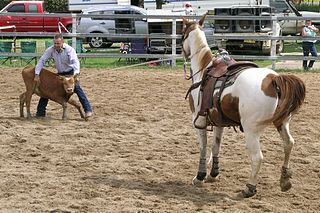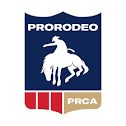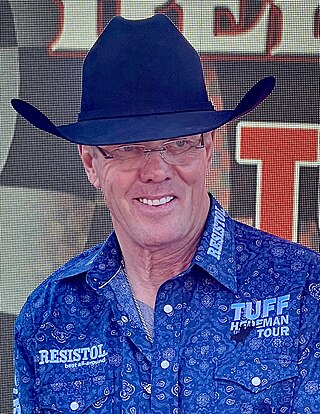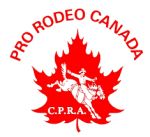
Rodeo is a competitive equestrian sport that arose out of the working practices of cattle herding in Spain and Mexico, expanding throughout the Americas and to other nations. It was originally based on the skills required of the working vaqueros and later, cowboys, in what today is the western United States, western Canada, and northern Mexico. Today, it is a sporting event that involves horses and other livestock, designed to test the skill and speed of the cowboys and cowgirls. American-style professional rodeos generally comprise the following events: tie-down roping, team roping, steer wrestling, Steer roping, saddle bronc riding, bareback bronc riding, bull riding and barrel racing. The events are divided into two basic categories: the rough stock events and the timed events. Depending on sanctioning organization and region, other events such as breakaway roping, goat tying, and pole bending may also be a part of some rodeos. The "world's first public cowboy contest" was held on July 4, 1883, in Pecos, Texas, between cattle driver Trav Windham and roper Morg Livingston.

Bull riding is a rodeo sport that involves a rider getting on a bucking bull and attempting to stay mounted while the animal tries to buck off the rider.

Bronc riding, either bareback bronc or saddle bronc competition, is a rodeo event that involves a rodeo participant riding a bucking horse that attempts to throw or buck off the rider. Originally based on the necessary buck breaking skills of a working cowboy, the event is now a highly stylized competition that utilizes horses that often are specially bred for strength, agility, and bucking ability. It is recognized by the main rodeo organizations such as the Professional Rodeo Cowboys Association (PRCA) and the International Professional Rodeo Association (IPRA).

Team roping also known as heading and heeling is a rodeo event that features a steer and two mounted riders. The first roper is referred to as the "header", the person who ropes the front of the steer, usually around the horns, but it is also legal for the rope to go around the neck, or go around one horn and the nose resulting in what they call a "half head". Once the steer is caught by one of the three legal head catches, the header must dally and use his horse to turn the steer to the left.

Calf roping, also known as tie-down roping, is a rodeo event that features a calf and a rider mounted on a horse. The goal of this timed event is for the rider to catch the calf by throwing a loop of rope from a lariat around its neck, dismount from the horse, run to the calf, and restrain it by tying three legs together, in as short a time as possible. A variant on the sport, with fewer animal welfare controversies, is breakaway roping, where the calf is roped, but not tied.
Steer roping, also known as steer tripping or steer jerking, is a rodeo event that features a steer and one mounted cowboy.

Breakaway roping is a variation of calf roping where a calf is roped, but not thrown and tied. It is a rodeo event that features a calf and one mounted rider. The calves are moved one at a time through narrow runs leading to a chute with spring-loaded doors. The horse and rider wait in a box next to the chute that has a spring-loaded rope, known as the barrier, stretched in front. A light rope is fastened from the chute to the calf's neck, releasing once the calf is well away from the chute and releasing the barrier, which is used to ensure that the calf gets a head start. Once the barrier has released, the horse runs out of the box while the roper attempts to throw a lasso around the neck of the calf.

The Australian Professional Rodeo Association (APRA) is the national governing body for professional rodeo in Australia. Founded in 1944, APRA has been setting the standards for rodeo in Australia for over 60 years. The Australian Rodeo consists of many events some of which are junior and ladies' (open) barrel racing, saddle bronc riding, bull riding, bareback bronc riding, rope and tie, steer wrestling, team roping and the steer ride. Men, women and children are involved in the Australian rodeo circuit.
The National Finals Rodeo (NFR) is the premier rodeo event by the Professional Rodeo Cowboys Association (PRCA). The NFR showcases the talents of the PRCA's top 15 money winners in the season for each event.

The Professional Rodeo Cowboys Association (PRCA) is the largest rodeo organization in the world. It sanctions events in the United States, Canada, and Mexico, with members from said countries, as well as others. Its championship event is the National Finals Rodeo (NFR). The PRCA is headquartered in Colorado Springs, Colorado, United States.

Cheyenne Frontier Days is an outdoor rodeo and western celebration in the United States, held annually since 1897 in Cheyenne, Wyoming. It bills itself as the "World's Largest Outdoor Rodeo and Western Celebration." The event, claimed to be one of the largest of its kind in the world, draws nearly 200,000 annually. Lodging fills up quickly during the peak tourist season throughout southern and eastern Wyoming, into northern Colorado and western Nebraska. The celebration is held during the ten days centered about the last full week of July. In 2008, Cheyenne Frontier Days was inducted into the ProRodeo Hall of Fame.

Richard Neale "Tuff" Hedeman is an American former professional rodeo cowboy who specializes in bull riding. He won the Professional Rodeo Cowboys Association (PRCA) bull riding world championship three times, as well as the 1995 Professional Bull Riders (PBR) world championship. He also won the 1993 world championship for the now-defunct Bull Riders Only (BRO) organization. He is also one of the co-founders of the PBR and is known for having been one of rodeo icon Lane Frost's closest friends. Hedeman and the infamous bucking bull Bodacious had a few historic clashes. He later served as the President of the PBR and then the President and Ambassador of Championship Bull Riding (CBR). In 2018, he formed his own bull riding organization: the Tuff Hedeman Bull Riding Tour (THBRT).
History of rodeo tracks the lineage of modern Western rodeo.
The All-Around is an award given to a rodeo competitor who is most successful in two or more events. Most individual rodeos and championships determine the winner of this award at the conclusion of the other events or championships.

The welfare of animals in rodeo has been a topic of discussion for the industry, the public, and the law for decades.
Make It Do,, better known as Peanuts, was a Quarter Horse gelding. Peanuts was inducted into the American Quarter Horse Hall of Fame in 2009. He was inducted into the ProRodeo Hall of Fame in the inaugural class of 1979.
Trevor Brazile is a semi-retired American rodeo champion who competed in the Professional Rodeo Cowboys Association (PRCA) and partners with a cowboy named Miles Baker. He was inducted into the ProRodeo Hall of Fame in 2022. He holds the record for the most PRCA world championship titles with 26. He won his 26th title in 2020. He also holds the record for the most all-around cowboy world champion titles at 14, breaking the record of 7 titles held by Ty Murray; Murray's last earned was in 1998.
The Heart of the North Rodeo is located in Spooner, Wisconsin, United States. The rodeo takes place the first full weekend in July every year since 1954, except 2020. It is sanctioned by the Professional Rodeo Cowboys Association (PRCA). Fans from all over come to watch the professional cowboys and cowgirls compete in the seven main events of rodeo, and even some up-and-coming little cowboys and cowgirls.
Guy Allen is an American ProRodeo Hall of Fame cowboy and an 18-time steer roping world champion. He competes in rodeos sanctioned by the Professional Rodeo Cowboys Association (PRCA). He won the world title for the steer roping event 18 times when competing at the National Finals Steer Roping (NFSR) and also won the National Finals Rodeo (NFR) Average title five times. He had won the title 11 times in a row when Buster Record broke his streak. Allen is also inducted into eight rodeo halls of fame.

The Canadian Professional Rodeo Association (CPRA) is the governing body of professional rodeo in Canada. Its championship event is the Canadian Finals Rodeo (CFR) held every November.














